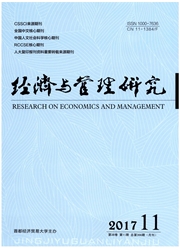

 中文摘要:
中文摘要:
疏解北京非首都核心功能,将会促使京津冀城市群深度整合区域科技资源。异地资本产业化、技术人员流动、跨区知识技能转化等因素也会重新塑造京津冀高科技产业创新的模块化空间结构。基于区域科技资源耦合的视角,本文构建京津冀高科技产业创新的模块化共生机制。同时,设计迭代模型进行数据模拟,结论为:当形成互利性模块化创新时,京津冀各创新单元及区域高科技产业的整体创新规模会显著扩大;另一方面,提高通勤运输便利度和知识技能转化率将会促使北京科技资本、技术人员向周边城市流动与迁移,缩小城市间产业创新规模及知识总量的差距,使其在区域空间内呈均匀分布,有益于推动京津冀高科技产业的创新与发展。
 英文摘要:
英文摘要:
The removal of non-capital functions can integrate technical resources in Beijing-Tianjin-Hebei region, and accelerate the modular innovation of the high-tcch industry, thereby industrial investment flows, technical personnel transfer and interregional knowledge will reshape the spatial structure of modularity innovation of the high- tech industry in Beijing-Tianjin-Hebei region. Therefore, the paper constructs the symbiosis mechanism of modularity innovation of the high-tech industry, and designs iterative models. Through simulation analysis, the paper draws the following conclusions :when it has mutual benefit in high-tech industry units from modularity innovation, the size of each unit and regional overall innovation expand significantly. On the other hand, when improving the efficiency of commuter transport and science knowledge, it speeds up industrial investment flows and technical personnel transfering from Beijing to the other cities of Beijing-Tianjin-Hebei region, and narrows the gap of innovation size and knowledge amount among cities, beneficial to promoting the innovation and development of high-tech industries in Beijing-Tianjin-Hebei region.
 同期刊论文项目
同期刊论文项目
 同项目期刊论文
同项目期刊论文
 期刊信息
期刊信息
